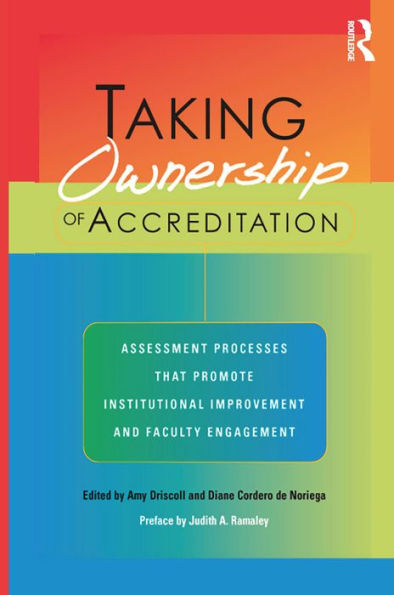This book demonstrates how a participatory approach to assessment and accreditation in their new forms creates a synergy for learner-centered education. It is a guide to approaching the accreditation process from a campus-wide perspective of ownership--illustrated by rich descriptions of how faculty, students, and administrators at California State University Monterey Bay engaged with and successfully focused their accreditation processes on the improvement of their practices. The approach that the authors describe was driven by a commitment to go beyond satisfying the accreditation expectations so as to promote ongoing and long-term improvement of student learning. It also reflects the shift of responsibility for assessment within institutions from a designated office to individual faculty and staff, entire departments, and the campus as a whole.The authors document strategies that are practical—ready to use or adapt—that are appropriate for all campuses. They also provide guidelines for the documentation process that accreditation demands. They demonstrate how they reduced traditional resistance to assessment by emphasizing its use for the improvement of student learning, helping faculty with their own teaching, and creating frameworks for continuing improvements that are valued by faculty.The authors emphasize the need for every institution to take into account its unique mission, vision, and core values; and to recognize the importance of individual departmental cultures. Although their accreditation "triggered" CSUMB’s engagement with assessment, the authors discuss other opportunities for jump-starting the process.
This book demonstrates how a participatory approach to assessment and accreditation in their new forms creates a synergy for learner-centered education. It is a guide to approaching the accreditation process from a campus-wide perspective of ownership--illustrated by rich descriptions of how faculty, students, and administrators at California State University Monterey Bay engaged with and successfully focused their accreditation processes on the improvement of their practices. The approach that the authors describe was driven by a commitment to go beyond satisfying the accreditation expectations so as to promote ongoing and long-term improvement of student learning. It also reflects the shift of responsibility for assessment within institutions from a designated office to individual faculty and staff, entire departments, and the campus as a whole.The authors document strategies that are practical—ready to use or adapt—that are appropriate for all campuses. They also provide guidelines for the documentation process that accreditation demands. They demonstrate how they reduced traditional resistance to assessment by emphasizing its use for the improvement of student learning, helping faculty with their own teaching, and creating frameworks for continuing improvements that are valued by faculty.The authors emphasize the need for every institution to take into account its unique mission, vision, and core values; and to recognize the importance of individual departmental cultures. Although their accreditation "triggered" CSUMB’s engagement with assessment, the authors discuss other opportunities for jump-starting the process.

Taking Ownership of Accreditation: Assessment Processes that Promote Institutional Improvement and Faculty Engagement
272
Taking Ownership of Accreditation: Assessment Processes that Promote Institutional Improvement and Faculty Engagement
272
Product Details
| ISBN-13: | 9781000980172 |
|---|---|
| Publisher: | Taylor & Francis |
| Publication date: | 07/03/2023 |
| Sold by: | Barnes & Noble |
| Format: | eBook |
| Pages: | 272 |
| File size: | 3 MB |
